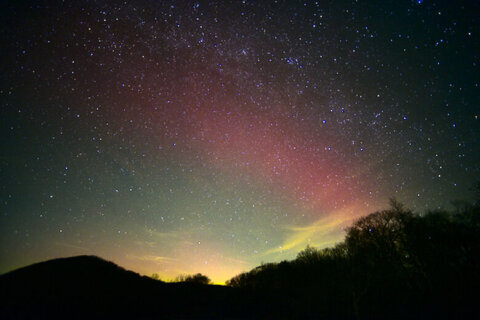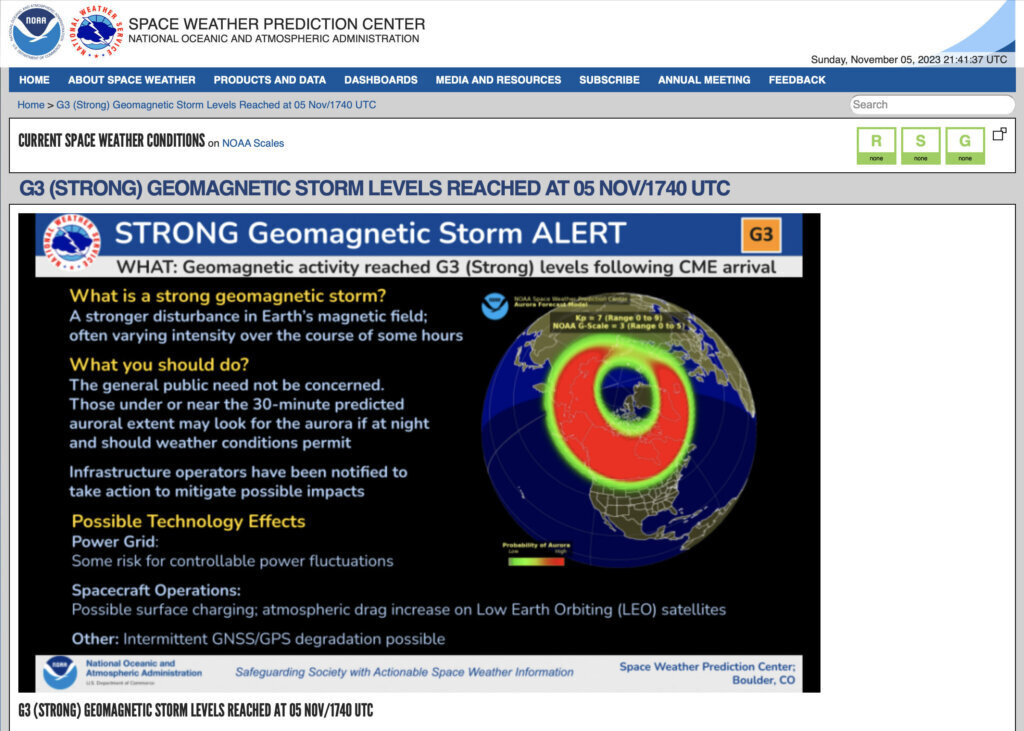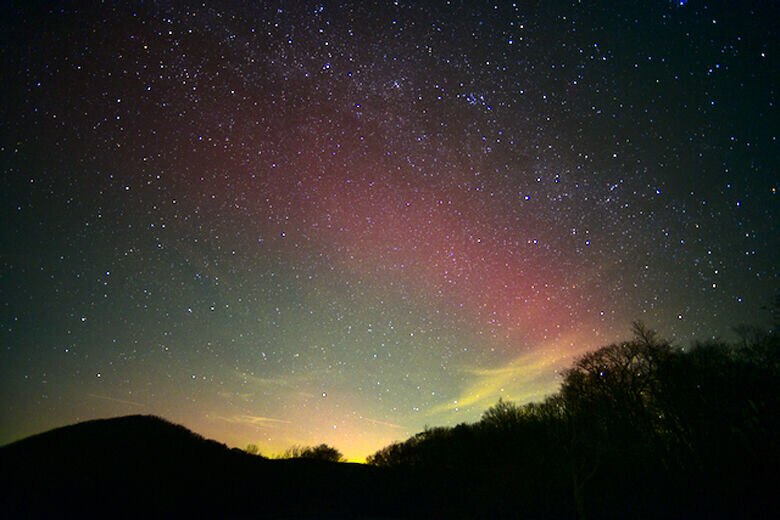
It’s a nice day in the D.C. area, weather-wise. But in the realm of Earth’s magnetic field, a strong Level G3 geomagnetic storm occurred that’s forecast to continue as a G2 storm. That could make an aurora (a.k.a. the Northern Lights) visible across portions of the U.S. Sunday night, including the D.C. area.
According to the NOAA Space Weather Prediction Center, northern U.S. states have a good chance of seeing aurora Sunday night, but the D.C. region’s more southerly location makes it more “iffy.”
Our best bet is to monitor the NOAA and space-related social media sites like EarthSky.org, and Space.com for updates. At present, the forecast shows the aurora will be visible to northern states.

For those on the lookout, it will be worth taking a look north from a dark sky site with a clear horizon. You might be able to detect some color in the sky if aurora are present, but they would likely be low on the northern horizon. Wide-field binoculars may help.
For photographers, use a camera or smartphone that can take exposures of several seconds — including using “Night Sky” or “Low Light” settings (if your camera has them). Steady the camera or use a tripod for best image results. (The camera may capture aurora that your eyes did not.)
While outside, be on the lookout for Taurid Meteor Shower fireballs too!
AURORA MAY BE VISIBLE TONIGHT!
A Geomagnetic event is ongoing that is creating the @NWSSWPC forecast OF AUORA visible tonight. Check their website for updates.
Look to the North with a clear horizon; take a pic w/ Smartphone or camera as they might image what you can’t see. pic.twitter.com/D97Z0IVjtp— Greg Redfern (@SkyGuyinVA) November 5, 2023
More about aurora and space weather
We are directly affected by space weather, which can produce a variety of events, including Sunday’s geomagnetic storm and the aurora.
Space weather, like our terrestrial weather, is caused by Earth’s interaction with our star, the Sun. We know it will be there every new day and count on it for life-giving warmth and energy. We also have become accustomed to it being well-behaved.
What many people may not know is that our Sun undergoes an 11 year Solar Cycle that can affect space weather throughout our solar system.
Spaceweather.com (I check this site every day just as I do my local weather) has a daily snapshot of what the space weather in the solar system is going to be like and a current image of the Sun.
Our Sun is a 4.5 billion year old star that we have been monitoring since Galileo. Today, humans have a fleet of spacecraft that monitor the Sun and space weather 24x7x365.
The Sun is currently in Solar Cycle 25 and is progressing toward Solar Maximum which is predicted to occur July 2025. As the Sun approaches Solar Maximum it produces more sunspots and Solar Events which produce space weather events like today’s Level G3 Geomagnetic Storm.
The Sun had an episode of disturbed behavior in 1859 that if it were to occur today could adversely affect us if we were not prepared.
On Sept. 1, 1859, the Sun experienced a solar storm episode observed by astronomer Richard Carrington. Eventually named “the Carrington Event,” this was a watershed event in understanding solar astronomy and the Sun’s effect on the Earth. Nothing like it has been observed since (thankfully as you will see).
If a Carrington-level solar event were to happen today, the effect on modern society’s infrastructure could be potentially catastrophic, especially the electrical grid. If you think this is unlikely, or too sci-fi to be true, I suggest you read the report published by the National Academies of Science in 2008.
Just recently the Sun had a very powerful space weather event on March 12, which, fortunately for us, occurred on the far side of the Sun.
As you listen live to WTOP for “Traffic and Weather together on the 8s” maybe now you will want to include a check on space weather as part of your daily routine.
I’m at Shenandoah National Park Sunday night to close out my 9th season of “Let’s Talk About Space.” My guests and I will be on the lookout for aurora and fireballs!
Follow my daily blog to keep up with the latest news in astronomy and space exploration. You can email me at skyguyinva@gmail.com.








